Church of St Mary Magdalen, Shopland
Article by Richard Kirton - September 2012
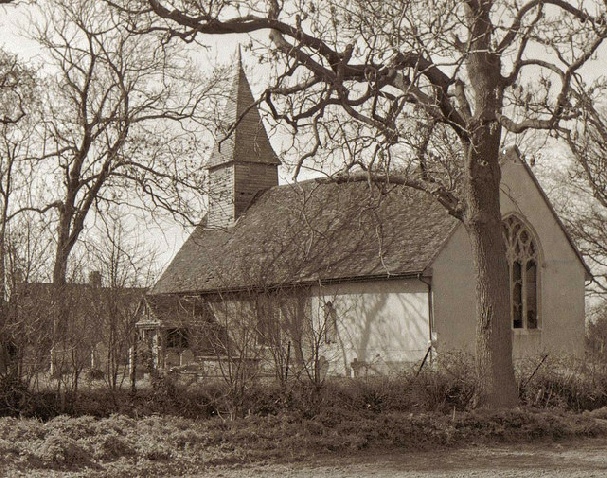 The parish church of St Mary Magdalen stood at the end of Shopland Hall Lane, just three miles north east of Southend-on-Sea. The church's former position is evident as a sunken rectangular clearing between many remaining headstones.
The parish church of St Mary Magdalen stood at the end of Shopland Hall Lane, just three miles north east of Southend-on-Sea. The church's former position is evident as a sunken rectangular clearing between many remaining headstones.
The church was Norman in origin and measured about 60ft by 19ft. The fabric of the church was rubble covered with cement and roughcast and had the traditional limestone dressing. The nave was 39ft by 19ft and was built early in the 12th century. There were two small early 12th century windows (the one in the south wall was later blocked up). The Norman chancel was 21ft by 19ft and was rebuilt and widened in the 13th or 14th century. A Piscina was installed along with a rose basin in the 14th century. The roofs of both the nave and the chancel dated back to the 14th or 15th century. A couple of 14th century windows were added as well as a 15th century priest’s door on the north side of the chancel. The east window combined both modern and 14th century architectur.jpg) e.
e.
The timber south facing porch on a small plinth was a fine example of 15th century craftsmanship. The porch can still be seen at St Thomas parish church in Bradwell St Mary, Essex. It was moved there when St Mary Magdalen was demolished in 1957.
A bell turret with a single church bell was added in 1608. The bell was supplied by Peter Hawkes in 1608, a Bell founder who was working in Essex and Suffolk during the early years of the 17th Century. There are only three other bells noted to have been supplied by him:
- St Mary & All Saints, Little Stambridge, unknown date, preserved at Great Stambridge Rectory
- St Augustin, Birdbrook, near Haverhill, 1612
- St Mary, Poslingford (tenor) in Suffolk, 1613.
All of the bells were inscribed in very elegant black letters. It is not known where Peter Hawkes worked or lived, or maybe he moved house from church to church. The inscription at Birdbrook parish church is in fine black gothic lettering with a figure of a bird, presumably a hawk, which probably represented the founder's badge.
When the late H. W. King, Secretary of the Essex Archaeological Society, visited St Mary Magdalen in 1847, he found no arch separating the chancel from the nave. This is unusual for a Norman church. Perhaps it was demolished when the chancel was widened in the 13th or 14th century. On his second visit in 1863, he found a new west window had been installed in the Decorated style. This would indicate that St Mary’s was still well used at this time.
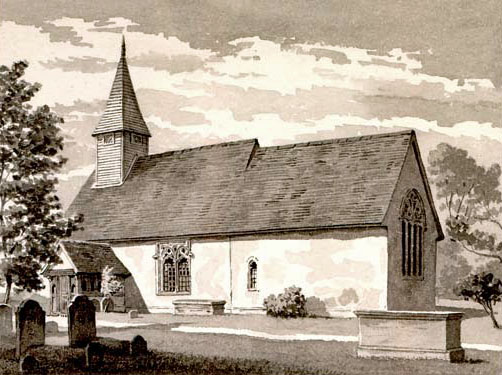 The church began to deteriorate sometime after this. In 1906, the walls were repaired at a cost of £43 10s. In August 1928, a complete restoration began. All the materials were donated by friends of the church. Long hidden Norman windows and doors were reopened and new furniture was installed. The old box pews were removed. The entire church was re-floored, re-plastered and white washed.
The church began to deteriorate sometime after this. In 1906, the walls were repaired at a cost of £43 10s. In August 1928, a complete restoration began. All the materials were donated by friends of the church. Long hidden Norman windows and doors were reopened and new furniture was installed. The old box pews were removed. The entire church was re-floored, re-plastered and white washed.
At the time of the Royal Commission's investigations in the 1920s, medieval glass was present in the east window and medieval tiles were visible in the nave floor.
Early in 1930, gales after evensong inflicted considerable damage to the church roof. The damage was repaired but just four years later gales wrought further severe damage. Once again, repairs were paid for privately.
By 1933 the parish of Shopland, having very few inhabitants (and no shop despite its name), was split between Southend-on-Sea and Sutton. The church’s condition had now become desperate, in 1936 the chancel was said to be in a ‘disgraceful state’. During World War II, a land mine compounded the deterioration when it exploded 150 yards from the structure causing damage to the east window and the roof. Further bombing in the vicinity continued the destruction. Vandalism and dwindling congregations finally forced the closure of the parish church of St Mary Magdalen in Shopland. On 6th September 1940, the church saw its last service, a christening and in 1957, it was finally demolished. Its ancient treasures were dispersed to churches around the county.
Reverend Frederick Thackeray was the Vicar of Shopland from 1847 to 1892, a total of 45 years. His memorial stands today commemorating his life and that of his his first wife, Georgiana Maclean Thackeray, together with his son-in-law, Francis Ralph Bernard who died aged 66. Francis was the husband of Frederick’s daughter Mary Selina Thackeray. Reverend Frederick Thackeray’s profile can be read here.
With regard to the accuracy of the article, I have personally visited Shopland, Vange, Bradwell , Canewdon and Sutton and referred to various internet articles and the following historical Publications :
History of the Rochford Hundred by Philip Benton, published in the last few years of the 19th century.
History of Essex complied by William Holman of the early 18th century (c 1710-1730)
History of Essex 1760-1768 Rev Philip Morant. Published in two volumes in 1768, they are a useful guide to the historical and genealogical description of each parish.
Essexiae Ecclesiasticae by H.W. King (housed in the Essex Record Office) gives much needed information on the state of Essex churches in the middle of the 19th century. He was in his later years, Secretary of the Essex Archaeological Society.
History of Essex by Thomas Wright, 1831-1835
Twenty Two of the Churches of Essex by George Buckler, 1856
A New and Complete History of Essex From a Late Survey by Peter Muilman, 1769-1772
The People’s History of Essex by D W Coller, 1861
The Place Names of Essex by P. H. Reaney
Royal Commission on History Monuments 1908

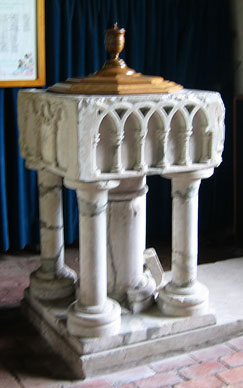
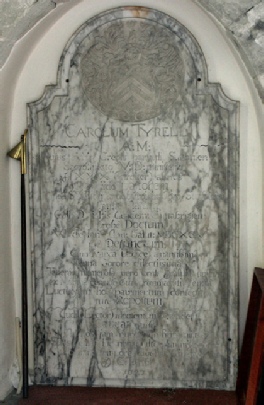
.jpg)
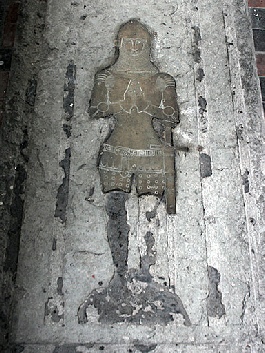





 The parish church of
The parish church of .jpg) e.
e.  The church began to deteriorate sometime after this. In 1906, the walls were repaired at a cost of £43 10s. In August 1928, a complete restoration began. All the materials were donated by friends of the church. Long hidden Norman windows and doors were reopened and new furniture was installed. The old box pews were removed. The entire church was re-floored, re-plastered and white washed.
The church began to deteriorate sometime after this. In 1906, the walls were repaired at a cost of £43 10s. In August 1928, a complete restoration began. All the materials were donated by friends of the church. Long hidden Norman windows and doors were reopened and new furniture was installed. The old box pews were removed. The entire church was re-floored, re-plastered and white washed.